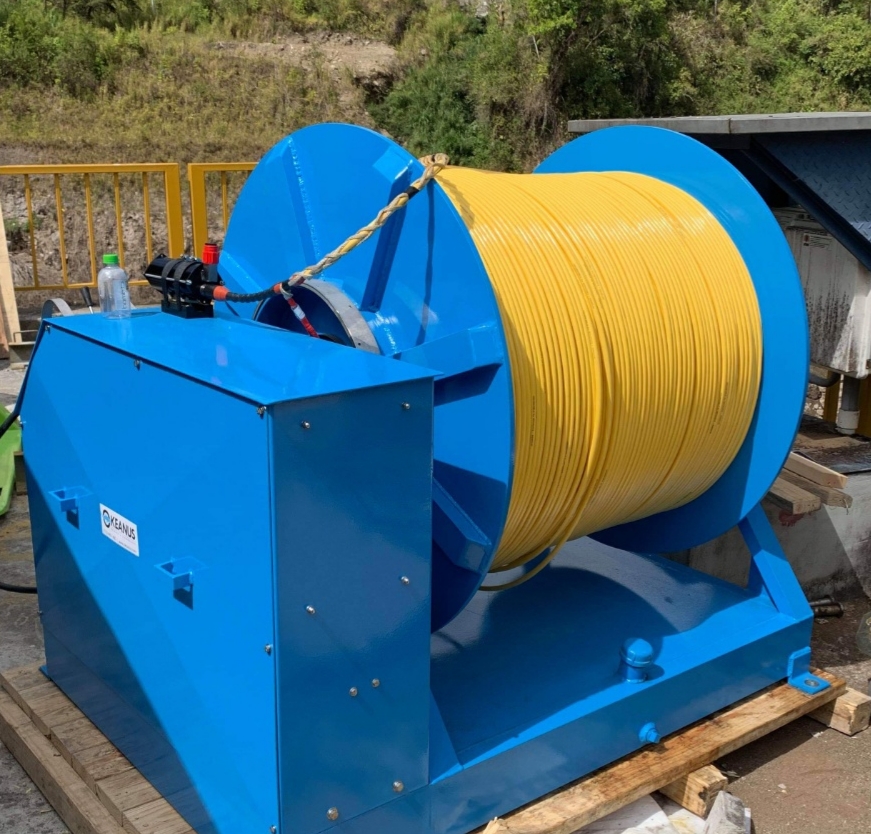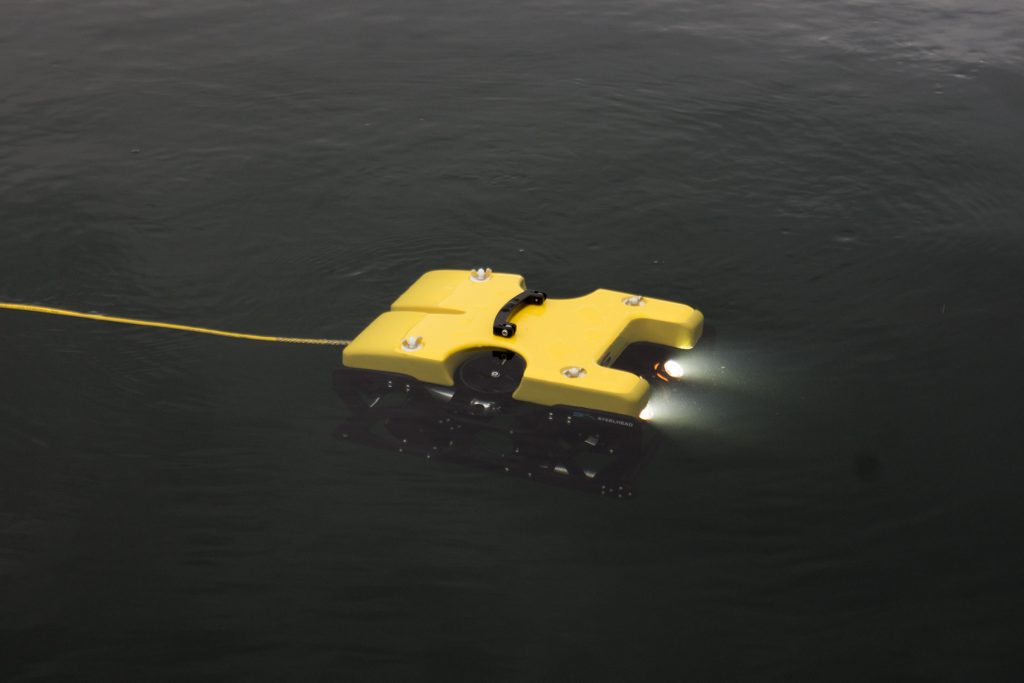There are several types of ROV tether: electrical, fiber-optic, hybrid, neutrally buoyant,… etc.
At SEAMOR Marine we use a combination of electrical and fiber-optic cables. This, to provide high-speed data transmission and immunity to electrical noise. These tethers are also designed to be durable and easy to repair in the field. The use of hybrid tethers allows us to offer you high-performance ROV systems that are reliable, efficient, and cost-effective.
Neutrally buoyant and heavy tethers
Neutrally buoyant tethers are designed to be neutrally buoyant in seawater. This means they have the same density as seawater and do not add any extra weight or buoyancy to the ROV system. Heavy tethers, on the other hand, are designed to be negatively buoyant. In other words, they sink in seawater and add extra weight to the ROV system.
Electrical tethers
Electrical tethers are the most common type. They consist of electrical cables that transmit power and data between the ROV and the surface control unit. These tethers are relatively inexpensive, durable, and can transmit high-speed data. However, they are susceptible to interference from electrical noise and are limited in the amount of data they can transmit.
Fiber optic tethers
Fiber-optic tethers use optical fibers to transmit data and power between the ROV and the surface control unit. They offer high-speed data transmission, are immune to electrical noise, and are extremely durable. However, they are more expensive and more difficult to repair than electrical tethers.

What we use at SEAMOR Marine
- Twisted pair tethers
- Fiber optic tethers
Twisted pair tethers consist of a pair of wires that are twisted together to transmit signals between the ROV and the surface. These tethers are typically used in shallow-water applications where shorter tether lengths are required. One of the main benefits of twisted pair tethers is their simplicity and reliability. They are relatively inexpensive to manufacture and are less prone to signal loss or interference than other types of tethers. However, twisted pair tethers have limited bandwidth and are not suitable for transmitting high-definition video or other large data streams.
Fiber optic tethers, on the other hand, use a bundle of glass or plastic fibers to transmit signals between the ROV and the surface. These tethers are typically used in deep-sea applications where longer tether lengths are required. One of the main benefits of fiber optic tethers is their high bandwidth, which allows them to transmit large data streams such as high-definition video and sensor data. Fiber optic tethers are also less prone to signal loss or interference than other types of tethers, which makes them more reliable in harsh environments. However, fiber optic tethers are more expensive to manufacture than other types of tethers and require specialized equipment to install and maintain. So, be sure to take good care of them.
What to consider
In short, the main benefits of twisted pair tethers are their simplicity, reliability, and low cost, while the main benefits of fiber optic tethers are their high bandwidth, reliability, and ability to transmit large data streams. The choice of which type of tether to use depends on the specific requirements of the ROV mission, such as the required tether length and the type of data that needs to be transmitted.
As always, it is important to chose your ROV and tether based on the job at hand. If you need more information or would like help finding the perfect ROV for you – get in touch with us! We are happy to chat.

